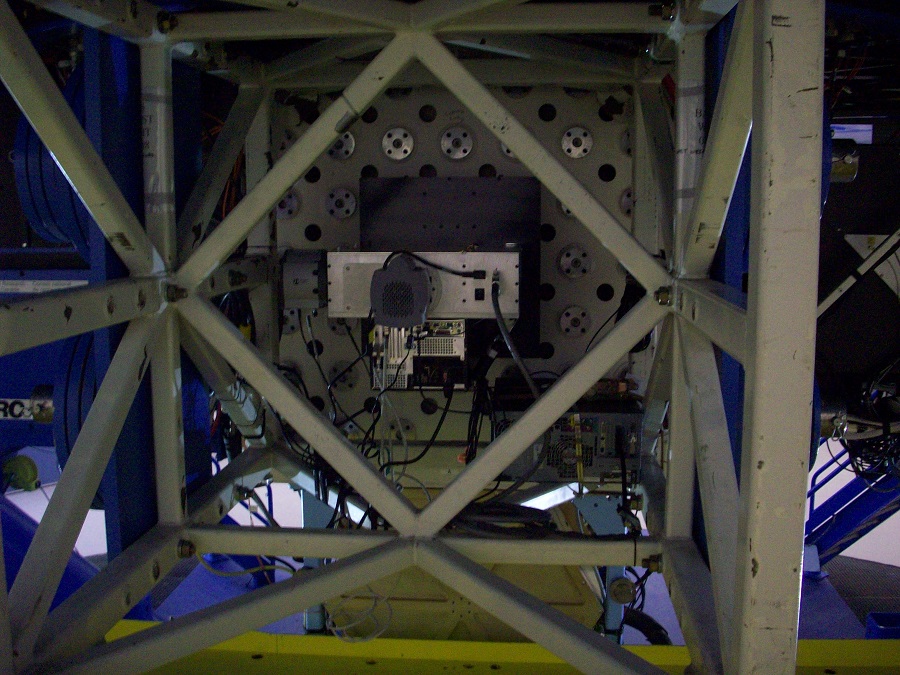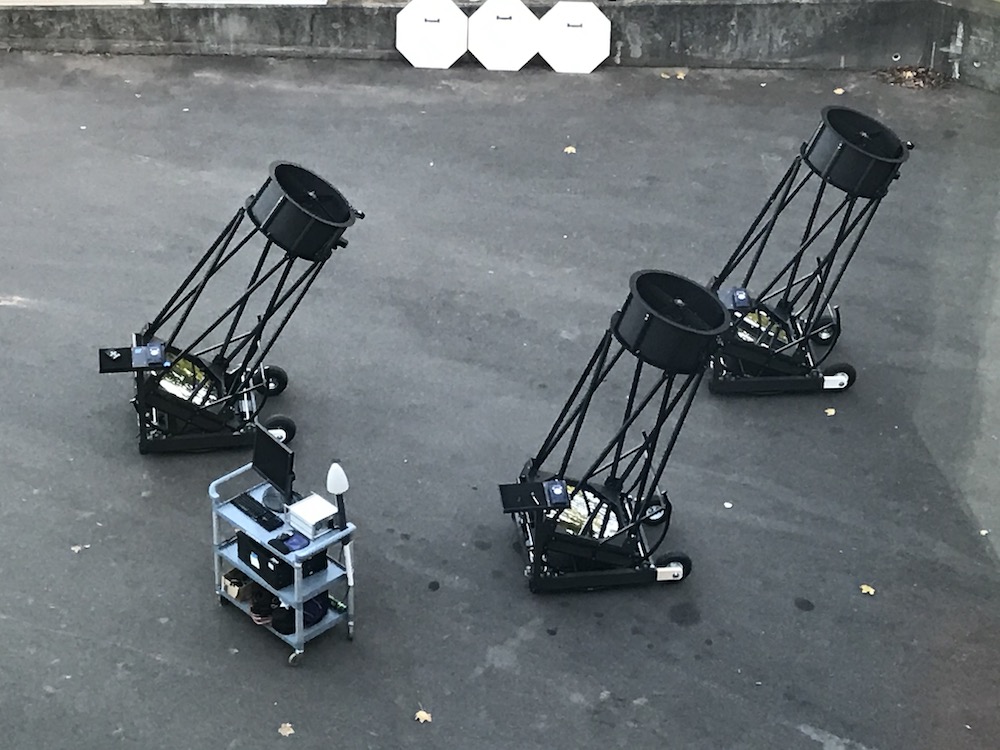Principal Investigator: Prof. Elliott Horch
Astronomical instrumentation is the field of building high-technology cameras and other instruments that are used with large telescopes. This has been a focus our work in the astronomy group at SCSU for over 10 years, producing two instruments owned by SCSU and collaborating with other groups in the construction of 3 other systems.
DSSI
The Differential Speckle Survey Instrument, or DSSI, was completed in 2008 and first used at the WIYN Telescope at Kitt Peak National Observatory. It was the first dual-channel speckle imaging camera ever constructed, able to reconstruct high-resolution images of astronomical objects in two colors simultaneously. DSSI has been used at the Lowell Observatory's Discovery Channel Telescope and at both Gemini telescopes, where it was used in significant follow-up work for NASA's Kepler and K2 planet-finding missions. Construction of DSSI was funded by the NSF. It is perhaps most famous for taking the highest-resolution ground-based image of Pluto in advance of the New Horizons satellite mission.

SCSI
The Southern Connecticut Stellar Interferometer is a three-station intensity interferometer completed in 2016. It is primarily used on the SCSU campus, but we have occasionally transported the electronics to Anderson Mesa in Arizona and used those with two of Lowell Observatory's telescopes there. Currently, we are attempting to make the instrument wireless, so that we can increase the distance between the stations in order to achieve higher resolution. The instrument can measure the diameters of bright stars. SCSI was funded through Connecticut state bond funds and the NSF.

NESSI
This instrument, the NN-explore Exoplanet Stellar Speckle Imager, was built at NASA's Ames Research Center in Mountain View, California. SCSU provided the optical design, based on our experience with DSSI. NESSI replaced DSSI at the WIYN Telescope in 2016. In addition to the small field of view for speckle work, NESSI also has a wide field mode, which can be used in a range of imaging projects.
'Alopeke and Zorro
Also built by NASA at the Ames Research Center, these instruments will be permanently mounted at the GCAL port of the Gemini North and South telescopes. Like NESSI, these instruments have two channels in operation simultaneously, and two choices for field of view: speckle and wide-field modes. Our group provided the optical design. They will be workhorse instruments in obtaining high-resolution imaging data of exoplanet host stars in support of the TESS planet-finding mission.
Other Activities. We collaborate with the University of Virginia and Lowell Observatory in prototyping new ideas for high-resolution imaging systems.
M.S. Theses and Projects
Ryan LaRue, Performance of an 8-Channel Timing Correlator for Photon Counting, M.S. Graduate Project, 2016.
János Löbb, Speckle Image Enhancement Using Recorded Shack-Hartmann Wavefront Sensor Data, M.S. Thesis, 2016.
Recent Publications
Clark, C. A., van Belle, G. T., Horch, E. P., Trilling, D. E., Hartman, Z. D., Collins, M., von Braun, K., Gehring, J., "The optomechanical design of the Quad-camera Wavefront-sensing Six-channel Speckle Interferometer (QWSSI)" SPIE Proceedings, 11446, Optical and Infrared Interferometry and Imaging VII, 114462A (2020).
J. W. Davidson, Jr., E. P. Horch, and S. R. Majewski, "Speckle imaging through a coherent fiber bundle," SPIE Proceedings, 10701, Optical and Infrared Interferometry and Imaging VI, 107012U (2018).
E. P. Horch, S. A. Weiss, J. D. Rupert, R. LaRue, P. Peronio, I. Rech, A. Gulinatti, "Prospects for wireless optical intensity interferometry with the Southern Connecticut stellar interferometer," SPIE Proceedings, 10701, Optical and Infrared Interferometry and Imaging VI, 107010Y (2018).
